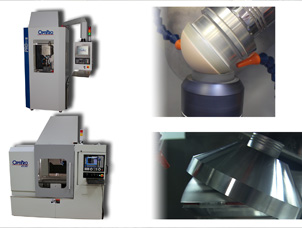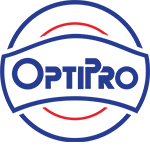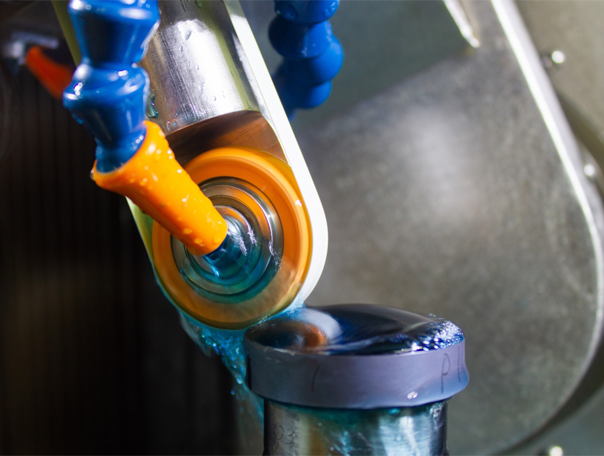 Precision optics manufacturers still utilizing conventional polishing methods: Increase efficiency on the manufacturing floor with CNC high speed polishing and watch productivity soar.
Precision optics manufacturers still utilizing conventional polishing methods: Increase efficiency on the manufacturing floor with CNC high speed polishing and watch productivity soar.
Conventional polishing requires an intuitive feel that often depends on skilled opticians for a dependable process. Even for experienced opticians, conventional polishing to the desired figure can be an iterative process and can require multiple runs before the optic meets specification.
The advantages of CNC high-speed polishing machines like the PRO 80P and ePX 200 are unquestionable and the results are instantly noticeable.
| Conventional Polishing | Comparison | CNC High Speed Polishing |
|---|---|---|
| Multiple spindles, multiple tools for each production job | Number of Spindles, Tooling | One spindle, one custom tool set per surface |
| Significantly more, typically 4X longer compared to CNC polishing |
Polishing Time to Remove Gray | Significantly less than conventional polishing |
| Low repeatability – grooves in pitch close up over time and must be recut frequently which affects part-to-part consistency |
Repeatability | High repeatability – run parts consecutively without ever changing tools and get consistent results |
| Skilled operator for duration of job | Skill Level of Operator | Moderately skilled operator for set up, lower level technician for production run |
| Slow production rate | Production Rate | Very high production rate |
| Large footprint to match production – more spindles, more floorspace consumed | Footprint Size | Small footprint – lower facility costs and requirements |
OptiPro’s polishing software, P Series, is the brain that allows the PRO 80P and ePX 200 to be so powerful. The P Series uses mathematical calculations to make setup easier and faster to achieve the desired radius of curvature. In addition, the P Series helps the operator meet the irregularity specification easier through a set of guided software handles.
Even if your print says “Pitch Polishing Only”, get the gray out faster with the PRO 80P or ePX 200, then put the finishing touches on your precision optics with a conventional polishing machine.
JML Optical is one of many OptiPro customers that has seen the benefits of implementing the ePX into their manufacturing operations. Read the JML Optical Case Study to see how the company was able to meet or exceed their customer needs by utilizing the ePX 200.
Adding the PRO 80P or ePX 200 CNC High-Speed Polishers to your manufacturing capabilities can reduce operating costs and cycle times, yielding increased throughput and higher profitability.
 Precision optics manufacturers still utilizing conventional polishing methods: Increase efficiency on the manufacturing floor with CNC high speed polishing and watch productivity soar.
Precision optics manufacturers still utilizing conventional polishing methods: Increase efficiency on the manufacturing floor with CNC high speed polishing and watch productivity soar.
Conventional polishing requires an intuitive feel that often depends on skilled opticians for a dependable process. Even for experienced opticians, conventional polishing to the desired figure can be an iterative process and can require multiple runs before the optic meets specification.
The advantages of CNC high-speed polishing machines like the PRO 80P and ePX 200are unquestionable and the results are instantly noticeable.
| Conventional Polishing | Comparison | CNC High Speed Polishing |
|---|---|---|
| Multiple spindles, multiple tools for each production job | Number of Spindles, Tooling | One spindle, one custom tool set per surface |
| Significantly more, typically 4X longer compared to CNC polishing | Polishing Time to Remove Gray | Significantly less than conventional polishing |
| Low repeatability - grooves in pitch close up over time and must be recut frequently which affects part-to-part consistency | Repeatability | High repeatability - run parts consecutively without ever changing tools and get consistent results |
| Skilled operator for duration of job | Skill Level of Operator | Moderately skilled operator for set up, lower level technician for production run |
| Slow production rate | Production Rate | Very high production rate |
| Large footprint to match production - more spindles, more floorspace consumed | Footprint Size | Small footprint - lower facility costs and requirements |
OptiPro’s polishing software, P Series, is the brain that allows the PRO 80P and ePX 200 to be so powerful. The P Series uses mathematical calculations to make setup easier and faster to achieve desired radius of curvature. In addition, the P Series helps the operator meet the irregularity specification easier through a set of guided software handles.
Even if your print says “Pitch Polishing Only”, get the gray out faster with the PRO 80P or ePX 200, then put the finishing touches on your precision optics with a conventional polishing machine.
JML Optical is one of many OptiPro customers that has seen the benefits of implementing the ePX into their manufacturing operations. Read the JML Optical Case Study to see how the company was able to meet or exceed their customer needs by utilizing the ePX 200.
Adding the PRO 80P or ePX 200 CNC High Speed Polishers to your manufacturing capabilities can reduce operating costs and cycle times, yielding increased throughput and higher profitability.




